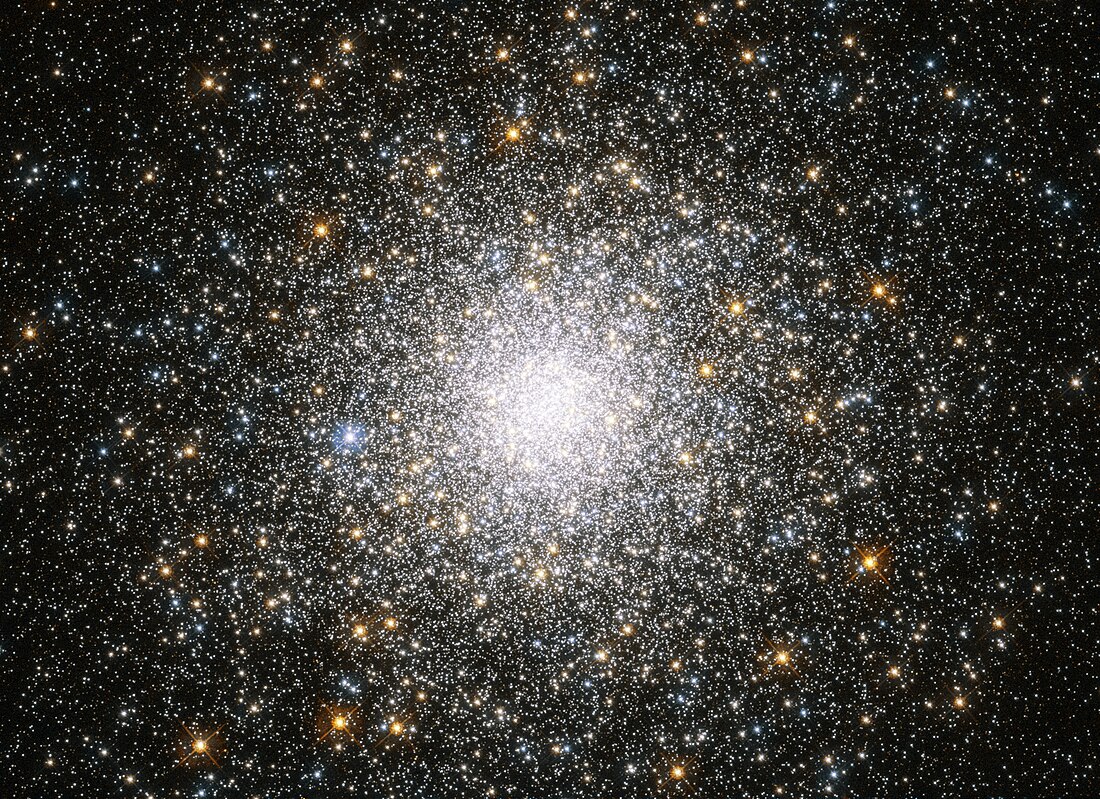Top Qs
Timeline
Chat
Perspective
Messier 75
Globular cluster in the constellation Sagittarius From Wikipedia, the free encyclopedia
Remove ads
Messier 75 or M75, also known as NGC 6864, is a globular cluster of stars in the southern constellation Sagittarius.[a] It was discovered by Pierre Méchain in 1780 and included in Charles Messier's catalog of comet-like objects that same year.[8]
M75 is about 67,500[3] light years away from Earth and is 14,700[6] light years away from, and on the opposite side of, the Galactic Center.[9] Its apparent size on the sky translates to a true radius of 67 light years.[5] M75 is classified as class I, meaning it is one of the more densely concentrated globular clusters known. It shows a slow rotation around an axis that is inclined along a position angle of −15°±30°.[3] The absolute magnitude of M75 is about −8.5, equating to 180,000 times more luminous than the Sun (L☉).[8]
The cluster has a half-light radius of 9.1 ly (2.80 pc)[6] with a core radius of about 1.6 ly (0.5 pc) and appears not to have undergone core collapse yet. The mass density at the core is 7.9×104 M☉·pc−3.[b][2] There are 38 RR Lyrae variable stars and the cluster appears to be Oosterhoff-intermediate in terms of metallicity.[9] 62 candidate blue stragglers have been identified in the cluster field, with 60% being in the core region.[2]
Messier 75 is part of the Gaia Sausage, the hypothesized remains of a dwarf galaxy that merged with the Milky Way.[10] It is a halo object with an orbital period of 0.4 billion years to travel around the galaxy on a very pronounced ellipse, specifically eccentricity of 0.87. The apocenter (maximal distance from Earth) is about 57,000 ly (17,500 pc).[3]
Remove ads
Gallery
- Messier 75 – wide field view
- Map showing location of M75
See also
References and footnotes
External links
Wikiwand - on
Seamless Wikipedia browsing. On steroids.
Remove ads



